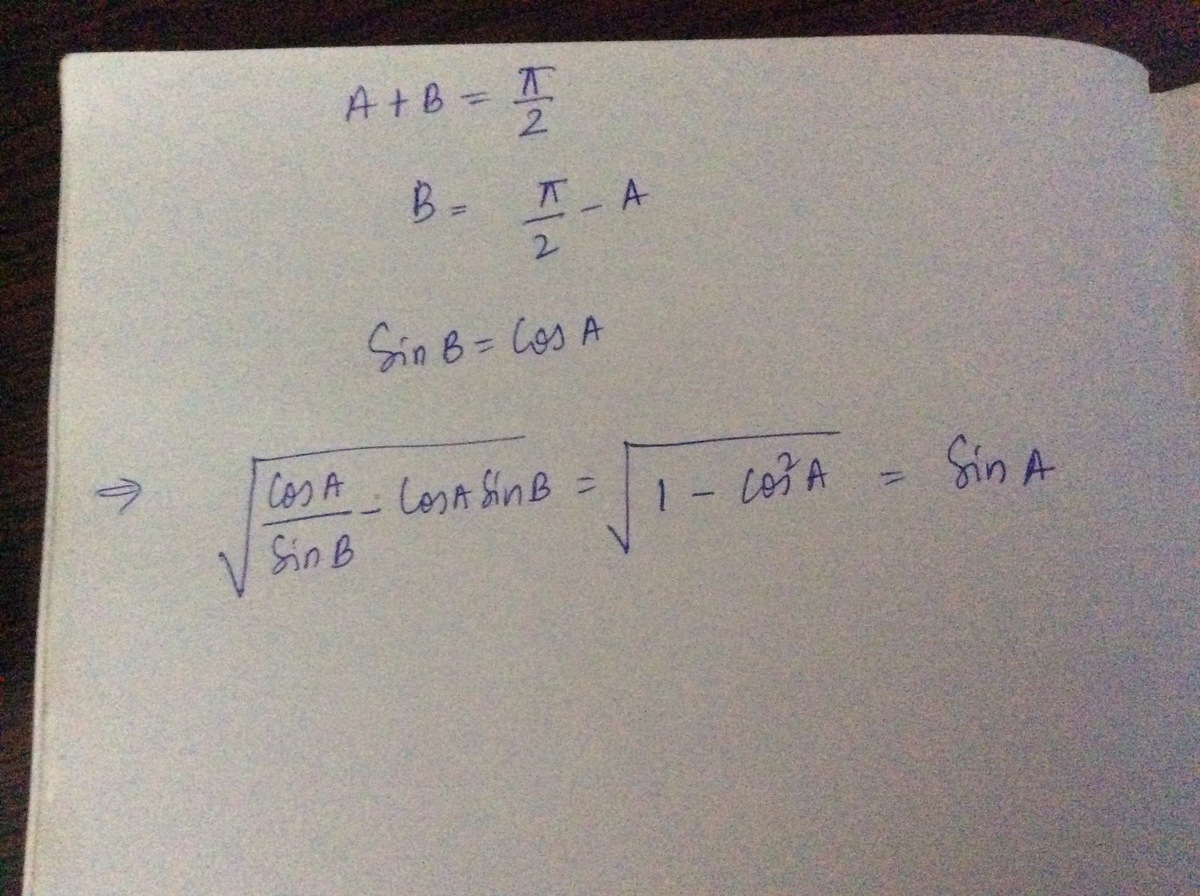Trigonometry! #121
Given that A and B are complementary acute angles, then
sin B cos A − cos A sin B = ?
Assume A and B are positive.

This section requires Javascript.
You are seeing this because something didn't load right. We suggest you, (a) try
refreshing the page, (b) enabling javascript if it is disabled on your browser and,
finally, (c)
loading the
non-javascript version of this page
. We're sorry about the hassle.
3 solutions
Relevant wiki: Trigonometric Co-function Identities
Note that sin B = sin ( 9 0 ∘ − A ) = cos ( A ) , so the expression becomes cos A cos A − cos A cos A = 1 − cos 2 A = sin 2 A = ∣ sin A ∣ = sin A , where we have made use of the fact that sin A > 0 and the pythagorean identity sin 2 A + cos 2 A = 1 .
Is this expression really equivalent to the sine? Shouldn't a restricted domain be stated? (i.e., 0 + 2 π n ≤ x ≤ π + 2 π n )
Why it can't be sin A
An accute angle means an angle that accumulate 90 degrees toplam your angle. From that; cosA/sinB=1 and cosA×sinB=cos^2 (A) We all know 1-cos^2 (A)=sin^2 (A)
Now from here sqrt (sin^2 (A))=sinA
